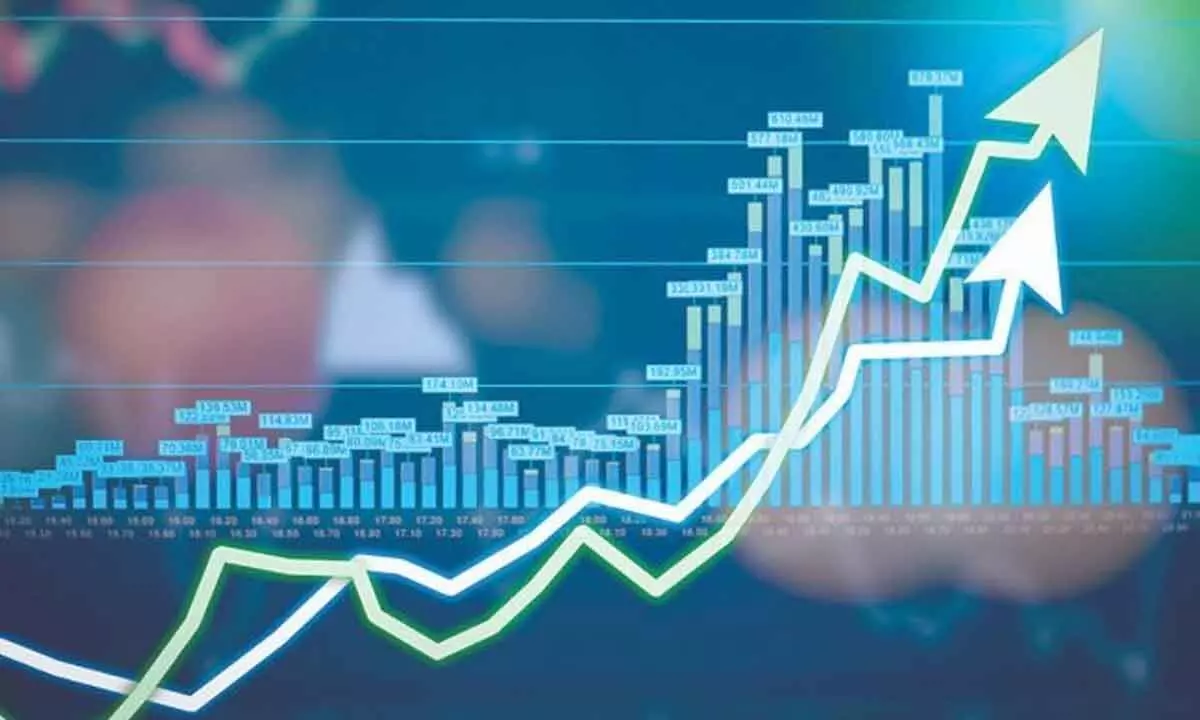GDP numbers likely to be higher than RBI’s projection
Going beyond RBI’s projection of GDP growth at 7.8 per cent for Q1 and 6.5 per cent for the full current fiscal, the numbers are likely to be bigger than those of the official figures.
image for illustrative purpose

Going beyond RBI’s projection of GDP growth at 7.8 per cent for Q1 and 6.5 per cent for the full current fiscal, the numbers are likely to be bigger than those of the official figures. State Bank of India’s Artificial Neural Network model has forecast the quarterly GDP growth for Q1 at 8.3 per cent. Joining the bandwagon, credit rating agency Icra estimated GDP for Q1 at 8.5 per cent. Economic activity in Q1 was boosted by a continued catch-up in services demand and improved investment activity, particularly a welcome front-loading in government capital expenditure. Moreover, sharply lower prices of various commodities on a YoY basis supported margins in some sectors. However, heavy unseasonal rains, the lagged effect of monetary tightening and weak external demand exerted a downward pressure on GDP growth. The credit rating agency has pegged GDP growth in Q1 at 8.5 per cent, exceeding the Monetary Policy Committee’s forecast of eight per cent. However, analysts are circumspect that erratic rainfall, narrowing differentials with year-ago commodity prices, and possible slowdown in momentum of government capex as we approach Lok Sabha elections, could dampen GDP growth in H2 below the MPC’s forecast. Overall, experts maintain their FY24 GDP growth estimate at six per cent, lower than the MPC’s projection of 6.5 per cent for the entire fiscal.
Most importantly, there has been a surge in capital expenditure in Q1, with the Union government spending 27.8 per cent of budgeted amounts, while states have done at 12.7 per cent of budgeted. Andhra Pradesh, Telangana and Madhya Pradesh, where are elections, are due have registered capital expenditure growth up to 41 per cent. In Q1, Indian Inc. reported top line growth of around 3 per cent while EBIDTA and PAT grew by more than 30 per cent, as comparAed to Q1FY23, contributed by sectors like banks, auto, IT, pharma, FMCG and refineries. Corporate results for Q1, ex-BFSI, represented by more than 3000 listed entities show almost a flat topline. However, EBIDTA and PAT grew by 23 per cent and 33 per cent, respectively, as compared to Q1FY23.
The growth in incremental deposits has almost doubled at Rs 11.3 lakh crore, compared to last year’s Rs five lakh crore by way of Rs 2000 banknotes and Rs 1.5 lakh crore from HDFC merger. Despite rising interest rates, the overall economic growth led to higher credit demand leading to banks reporting a robust rise in advances. Both PSBs and private sector banks logged in equal pace of loan growth during Q1. All the major financial parameters like credit deployment, profitability, asset quality and capital adequacy indicate the performance of PSBs has significantly improved. They are adequately capitalised, resilient and have sound financial health. In Q1, PSBs declared net profit of Rs 34418 crore and seem immune to any visible macroeconomic shock while readying to anchor credit needs.

